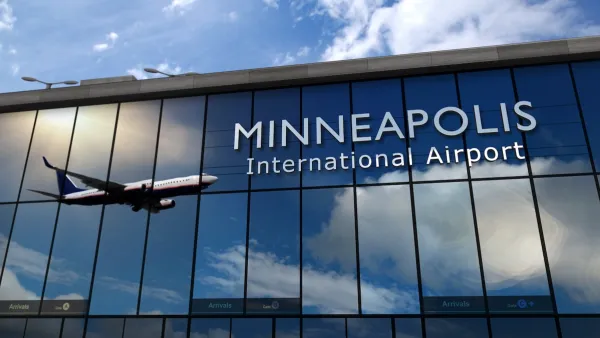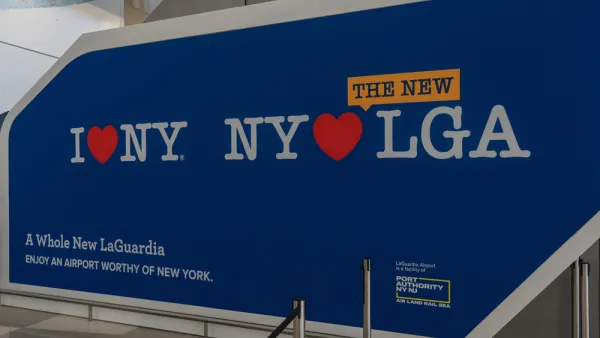Often depicted as drivers of local economies, airports have struggled to stay profitable as passenger air travel continues to languish. Steve Malaga presents the case that throwing money at this particular problem can actually make things worse.
The first decade of the 2000s has not been particularly kind to commercial air travel. Following heightened nerves in the wake of 9/11 and the greatest economic slump since the Great Depression, industry growth has practically screeched to a halt. Scrambling to keep their boats high in a sinking tide, many local governments have poured vast fortunes into building or expanding airports – to little avail and much taxpayer dismay, Malaga argues.
From rural Beecher, Illinois to metropolitan Pittsburgh to the Florida Panhandle, government agencies have been pushing a platform of resuscitation through investment and expansion. Often perilously financed and accompanied by devastating claims to eminent domain, these expansions and new airports require exorbitant fees from the airlines that operate there, which are in turn passed on to passengers, who then make their travel arrangements from a more affordable nexus.
Such is the case in Cincinnati, where some three-quarters of businesses fly employees out through the airport in Dayton, Ohio, over an hour away by car, to avoid higher fares at Cincinnati/Northern Kentucky International. "Unless you’re suffering from delusion," says aviation expert Darryl Jenkins, "you realize that the Cincinnati airport is now really in Dayton."
"Expanding airports isn’t always a bad idea, of course," concedes Malaga. "In a growing, thriving region, it may make sense: Atlanta’s Hartsfield-Jackson, for example, has spent $6 billion over the last decade to add needed terminal space and parking. Dallas/Fort Worth International Airport is investing $2 billion in new space to meet rising demand."
But when expansions and new construction require long-term commitments from airlines already on rocky footing, a bad gamble can turn into an onerous burden on taxpayers. MidAmerica St. Louis Airport, built in the nineties and based on optimistic projections for future demand, was one such gamble: "It took MidAmerica two and a half years to land its first scheduled passenger service, by Pan American Airways... That service started in August 2000 and ended in December 2001, a casualty of lackluster sales. Three other airlines—Great Plains, TransMeridian, and Allegiant—tried to make a go of MidAmerica, only to pull out quickly, even though they had received financial assistance to operate there."
Malaga closes with a dose of scrutiny for airport subsidies slated to generate economic growth: "Last spring, investigative reporters for Scripps Howard News Service boarded 11 flights at subsidized airports and found just two of them carrying more than two passengers. Together, the 11 flights had 130 empty seats, for which taxpayers nevertheless paid a total of $155,000."
FULL STORY: Airfields of Dreams

National Parks Layoffs Will Cause Communities to Lose Billions
Thousands of essential park workers were laid off this week, just before the busy spring break season.

Retro-silient?: America’s First “Eco-burb,” The Woodlands Turns 50
A master-planned community north of Houston offers lessons on green infrastructure and resilient design, but falls short of its founder’s lofty affordability and walkability goals.

Delivering for America Plan Will Downgrade Mail Service in at Least 49.5 Percent of Zip Codes
Republican and Democrat lawmakers criticize the plan for its disproportionate negative impact on rural communities.

Test News Post 1
This is a summary

Test News Headline 46
Test for the image on the front page.

Balancing Bombs and Butterflies: How the National Guard Protects a Rare Species
The National Guard at Fort Indiantown Gap uses GIS technology and land management strategies to balance military training with conservation efforts, ensuring the survival of the rare eastern regal fritillary butterfly.
Urban Design for Planners 1: Software Tools
This six-course series explores essential urban design concepts using open source software and equips planners with the tools they need to participate fully in the urban design process.
Planning for Universal Design
Learn the tools for implementing Universal Design in planning regulations.
EMC Planning Group, Inc.
Planetizen
Planetizen
Mpact (formerly Rail~Volution)
Great Falls Development Authority, Inc.
HUDs Office of Policy Development and Research
NYU Wagner Graduate School of Public Service




























